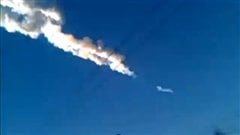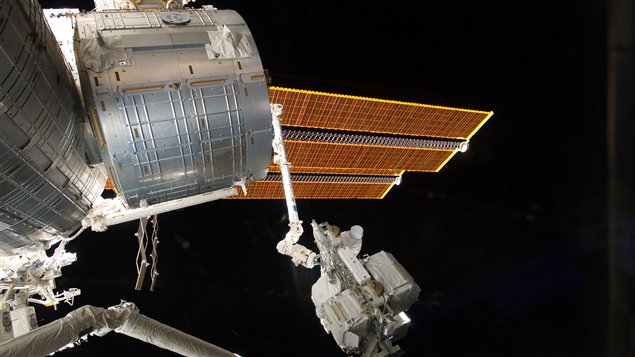Although popular astronaut Chris Hadfield will not become the new leader of the Canadian Space Agency, it will carry on doing vital work on future missions, says science journalist and National Geographic contributor Andrew Fazekas. Hadfield may have disappointed some people, but Fazekas was not surprised he decided to retire after a long career and a gruelling six months in space.
The space agency is likely to capitalize on the worldwide attention Hadfield drew by singing in space, sending lots of photos back and generally using social media to draw attention to the mission aboard the International Space Station.

dangerous asteroids like this one that
exploded over Siberia in February. © CBC
Canadian NEOSSat monitors dangerous asteroids
Exciting projects are under way including the suitcase-sized satellite called NEOSSat, noted Fazekas. He calls it Canada’s “eye in the sky” on the lookout for potentially hazardous asteroids and other satellites. NEOSSat was launched in February aboard an Indian rocket.
Mountain-sized space rocks whiz by earth. Notably, one caused 1,000 injuries and blew out windows over Siberia in February. Just a few hours later a football field-sized sailed between earth and a communications satellite just 28,000 km from earth.
“This brought worldwide attention to the fact that there are asteroids that cross earth’s orbit and we need to catalogue them,” said Fazekas, “So Canada’s taking a leading role in being able to do that.”

a series of small satellites. © Canadian Space Agency
“Lots of interesting projects”
Canada has a satellite joint venture with Japan, he added. An x-ray space telescope will help unlock some of the mysteries of black holes and distant galaxies. A series of small satellites called Cassiopeia will examine the phenomenon of aurora borealis, commonly called northern lights. “(There are)…lots of interesting projects in the pipeline,” remarked Fazekas.
Hadfield was instrumental in building the orbiting space lab and he played a critical role in developing and refining techniques involving robotics and the Canadarm, Canada’s huge space crane. His technical and communications skills will be sorely missed by the Canadian Space Agency, but Fazekas notes he was surrounded by a great team which will carry on excellent work in the future.







For reasons beyond our control, and for an undetermined period of time, our comment section is now closed. However, our social networks remain open to your contributions.